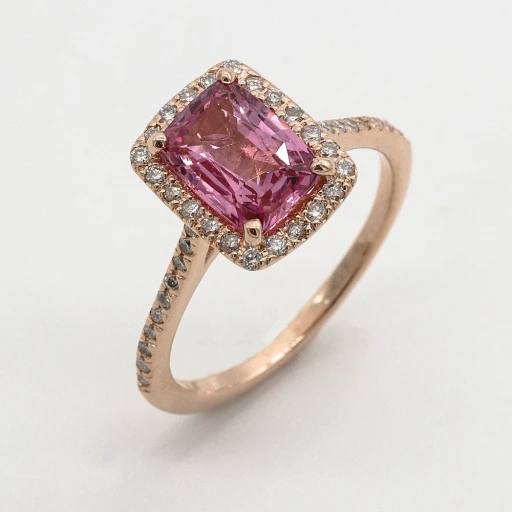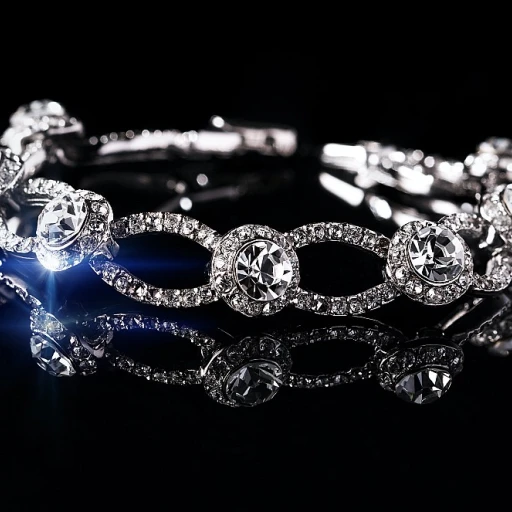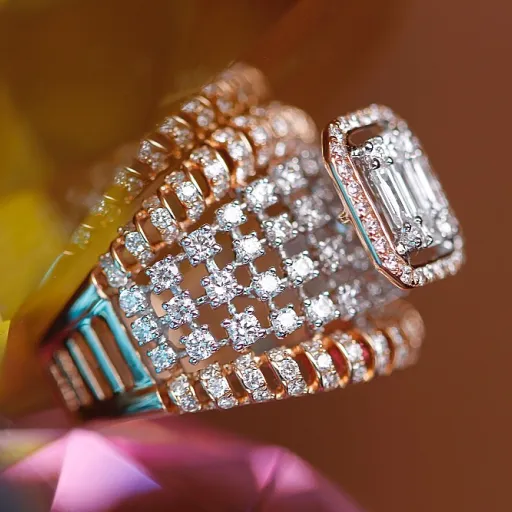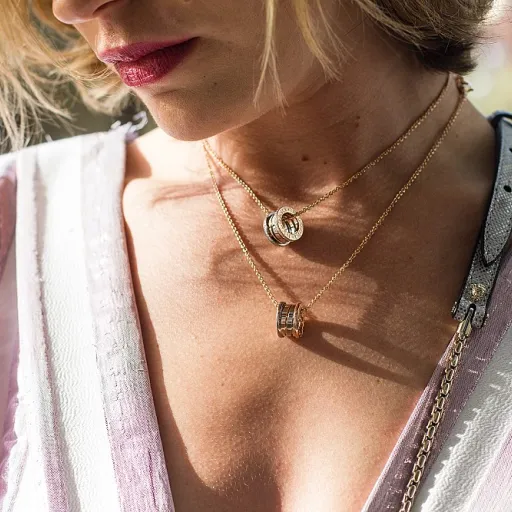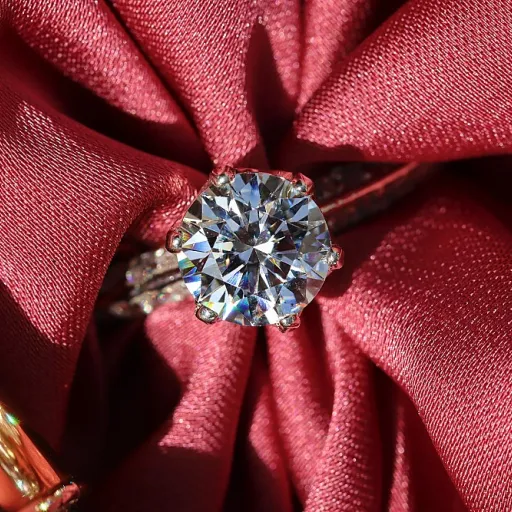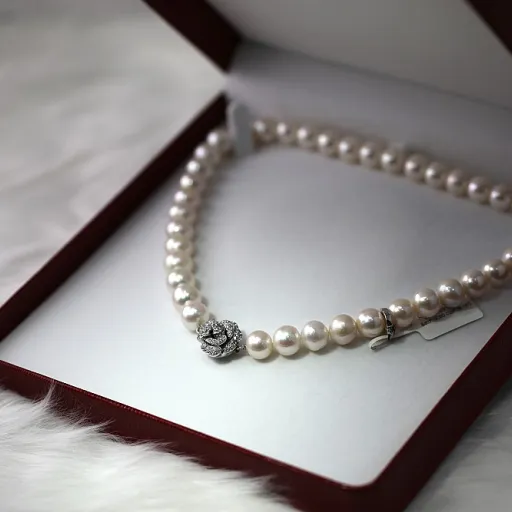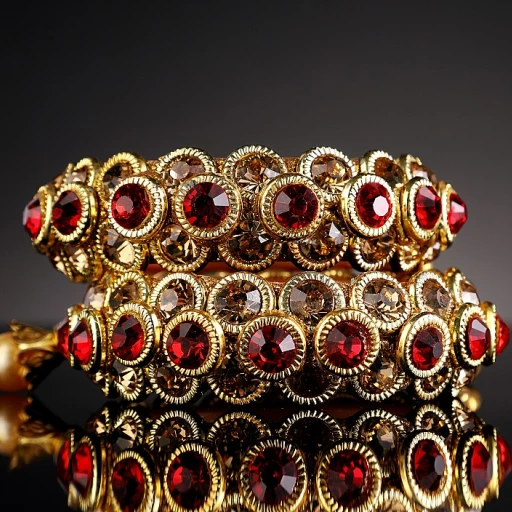
Understanding the appeal of rose gold and white
Why Rose Gold and White Gold Captivate
Rose gold and white gold have become mainstays in modern fine jewelry, each offering a unique allure that appeals to a wide range of tastes. The soft, romantic hue of rose gold—sometimes called pink gold or gold rose—evokes warmth and elegance, while white gold brings a sleek, pure, and contemporary feel. Both metals are often chosen for engagement rings, necklaces, and other cherished pieces, reflecting both tradition and innovation in jewelry design.
Color Harmony and Versatility
The subtle blush of rose gold pairs beautifully with the cool sheen of white gold, creating a refined harmony that stands out in any jewelry shop. This combination is especially popular in rings and engagement rings, where the interplay of pink and white tones can highlight the brilliance of diamonds or lab grown stones. Unlike yellow gold, which offers a classic look, rose and white gold together provide a modern twist that suits both everyday wear and special occasions like birthdays or anniversaries.
- Rose gold: Achieved by blending pure gold with copper, resulting in its signature pink hue.
- White gold: Created by alloying gold with metals like palladium or nickel, often finished with rhodium plating for extra shine and durability.
- Yellow gold: The traditional choice, known for its rich, warm color.
Emotional and Aesthetic Appeal
Many jewelry owners are drawn to rose gold and white gold for their ability to complement a variety of skin tones and personal styles. The gentle pink of rose gold brings a touch of romance, while white gold offers a neutral backdrop that lets gemstones and diamonds shine. These metals also work well with different settings, from minimalist to ornate, making them a favorite for custom engagement rings and gold jewellery collections.
For those interested in exploring how these metals enhance other jewelry types, discover more about radiant earrings and their role in modern jewelry decor.
Historical influences shaping rose gold and white trends
From Royal Courts to Modern Jewelry Shops
The story of rose gold and white gold is deeply woven into the evolution of jewelry design. While pure gold has been treasured for centuries, the introduction of alloys like rose and white gold marked a turning point in both aesthetics and technique. Rose gold, sometimes called pink gold, gained popularity in 19th-century Russia, where its warm, romantic hue was favored for engagement rings and decorative pieces. White gold, on the other hand, emerged in the early 20th century as a modern alternative to platinum, offering a sleek, pure look that complemented the Art Deco movement.
Influence of Cultural Shifts and Technology
Changing tastes and technological advances have shaped the way gold is used in fine jewelry. The rise of lab grown diamonds and lab grown gold has made it possible to create sustainable, ethical pieces without compromising on quality or color. Rhodium plating, often used on white gold, gives jewelry a bright, reflective finish that enhances the setting of diamonds and colored gemstones. Meanwhile, gold plated and gold filled techniques have made it easier for jewelry shops to offer a variety of styles at different price points, expanding access to both rose and white gold jewelry.
Color Trends and the Modern Palette
Today, the interplay of rose, white, and yellow gold allows for endless creativity in design. Modern engagement rings often combine these metals for a unique, personalized look. The soft blush of rose gold pairs beautifully with the cool elegance of white gold, while yellow gold adds a classic touch. This refined harmony is echoed in necklaces, rings, and even decor, reflecting a broader trend toward mixing metals and colors in both jewelry and room design. For more on how gold varieties influence contemporary styles, explore this insightful article on gold-filled jewelry necklaces.
Pairing rose gold and white with gemstones
Gemstone Choices That Complement Rose and White Gold
Pairing gemstones with rose gold and white gold creates a striking balance between warmth and purity. The subtle blush of rose gold enhances the vibrancy of colored stones, while the cool sheen of white gold offers a modern, neutral backdrop for both classic and contemporary gems. When selecting gemstones for rings, necklaces, or engagement pieces, consider how the metal’s tone interacts with the stone’s color and clarity.
- Diamonds: Both lab grown and natural diamonds look stunning in white gold and rose gold settings. White gold’s reflective quality amplifies a diamond’s brilliance, making it a popular choice for engagement rings. Rose gold, on the other hand, adds a romantic, vintage-inspired touch to diamond engagement rings.
- Colored Gemstones: Pink sapphires, morganite, and rubies are especially harmonious with rose gold, as their hues echo the metal’s warm undertones. In contrast, blue sapphires and emeralds stand out beautifully against the crisp, pure look of white gold.
- Yellow and Pink Stones: Yellow diamonds and pink tourmaline create a playful contrast in white gold settings, while rose gold enhances their natural warmth for a more unified appearance.
Modern jewelry design often blends rose gold and white gold in a single piece, allowing for creative gemstone combinations. This approach is especially popular in nature-inspired wedding rings, where the interplay of metals and stones reflects organic beauty and individuality.
Settings and Styles for Maximum Impact
The choice of setting can dramatically influence how gemstones interact with rose gold and white gold. Prong settings in white gold maximize light reflection, making diamonds and colored stones appear brighter. Bezel settings in rose gold offer a softer, more vintage look, especially for pink or champagne diamonds. For those seeking a unique statement, mixing metals within the same piece—such as a white gold band with rose gold prongs—can highlight the gemstone’s color and add visual interest.
Whether shopping for engagement rings, necklaces, or birthday gifts, consider how the combination of gold, gemstone, and setting aligns with personal style and the intended occasion. The refined harmony of rose gold and white gold, paired with thoughtfully chosen gemstones, ensures each jewelry piece feels both timeless and modern.
Care and maintenance for rose gold and white jewelry
Protecting the Luster of Rose and White Gold
Fine jewelry crafted from rose gold and white gold is admired for its unique color and modern elegance. However, these metals require thoughtful care to maintain their brilliance. Unlike pure gold, which is naturally resistant to tarnish, rose and white gold are alloys, meaning they are mixed with other metals. This makes them more susceptible to wear and environmental factors.
- Rose gold contains copper, giving it its pink hue. Over time, exposure to air and moisture can cause the copper to darken slightly. Regular gentle cleaning with a soft cloth helps preserve its warm glow.
- White gold is often coated with rhodium plating to enhance its bright, pure appearance. This plating can wear off, especially on rings and engagement rings that are worn daily. Re-plating every couple of years at a trusted jewelry shop is recommended to maintain the white finish.
- Both rose and white gold jewelry should be kept away from harsh chemicals, such as those found in cleaning products or swimming pools. These can damage the metals and any gold plating.
Storage and Everyday Wear
Proper storage is essential for preserving the beauty of gold jewelry. Store pieces separately in a soft pouch or lined box to prevent scratches, especially when mixing metals like yellow gold, pink gold, and white gold. Necklaces, rings, and other items can easily scratch each other if not separated.
Remove jewelry before engaging in activities that could expose it to knocks or chemicals, such as sports, gardening, or cleaning. This is especially important for diamond engagement rings and lab grown diamond pieces, as settings can loosen over time.
Professional Maintenance and Inspection
Regular professional inspections help ensure the security of settings, especially for diamond engagement rings and gold engagement pieces. Jewelers can check for loose stones, worn prongs, and thinning bands. For lab grown or natural diamonds, this is crucial to avoid loss or damage.
Ultrasonic cleaning is sometimes offered for gold jewellery, but it is best to consult with a professional first, as some gemstones and settings may not be suitable for this method.
| Metal Type | Care Tips | Common Issues |
|---|---|---|
| Rose Gold | Clean with soft cloth, avoid moisture, store separately | Color darkening, scratches |
| White Gold | Re-plate rhodium, avoid chemicals, regular inspection | Plating wear, dullness |
| Yellow Gold | Polish gently, avoid abrasives, store carefully | Scratches, loss of shine |
By following these care and maintenance tips, you can ensure your rose gold, white gold, and yellow gold jewelry remains a cherished part of your collection, whether it’s for a birthday, engagement, or simply to elevate your room decor with timeless elegance.
Styling tips for rose gold and white jewelry
Effortless Pairings for Every Occasion
Rose gold and white gold jewelry offer a versatile palette that complements a wide range of styles and settings. Whether you are dressing for a formal event or a casual gathering, these metals adapt beautifully. Their subtle pink and pure white tones blend seamlessly with yellow gold, creating a modern, layered look that is both sophisticated and on-trend.
- Mixing Metals: Don’t hesitate to combine rose, white, and yellow gold pieces. Layering necklaces, rings, or bracelets in different gold hues adds dimension and personality to your look.
- Gemstone Accents: Rose gold settings enhance the warmth of pink or champagne diamonds, while white gold provides a crisp backdrop for lab grown or pure diamonds, making them appear even more brilliant.
- Room for Statement Pieces: A bold rose gold engagement ring or a white gold diamond necklace can serve as a focal point, especially when paired with understated gold jewellery or decor-inspired accessories.
Styling for Everyday and Special Moments
For daily wear, opt for minimalist rose gold or white gold rings and necklaces. Their neutral tones work well with most outfits, from business attire to weekend casual. For special occasions like birthdays or engagements, consider pieces with intricate settings or lab grown diamonds for added sparkle and ethical appeal.
- Engagement and Wedding: Rose gold engagement rings offer a romantic, vintage-inspired look, while white gold engagement rings are timeless and pure. Both metals pair well with diamond engagement stones, whether natural or lab grown.
- Layering: Stack gold plated, pink gold, and gold white rings for a playful, modern effect. Mixing textures and finishes—such as matte, polished, or rhodium plating—adds interest without overwhelming your style.
- Color Coordination: Match your jewelry to the room or event decor for a cohesive appearance. Pink white and gold pink pieces can echo floral arrangements or table settings, enhancing the overall aesthetic.
Practical Tips for Lasting Beauty
When shopping at a jewelry shop, consider the practicality of each piece. Pure gold is soft, so mixing it with other metals like rose or white gold increases durability. For those who prefer hypoallergenic options, lab grown and gold plated pieces are excellent choices. Remember, the right setting can elevate even the simplest necklace or ring, making it suitable for any occasion.
Investment value and market trends
Market Dynamics and Value Retention
Rose gold and white gold jewelry have become mainstays in the modern fine jewelry market. Their popularity is driven by their versatility, unique color profiles, and the way they complement both classic and contemporary styles. As consumer preferences evolve, these metals continue to hold strong investment value, especially when paired with high-quality diamonds or lab grown stones.
- Rose gold—with its pink hue—offers a romantic alternative to yellow and white gold, making it a favorite for engagement rings and birthday gifts.
- White gold is prized for its pure, bright appearance, often enhanced with rhodium plating for extra shine and durability.
- Both metals are frequently seen in necklaces, rings, and gold jewellery, appealing to those who appreciate refined decor and modern design.
Factors Influencing Value
The value of rose gold and white gold pieces is influenced by several factors:
| Factor | Impact on Value |
|---|---|
| Gold Purity (karat) | Higher karat (e.g., 18K) means more pure gold, increasing intrinsic value. |
| Gemstone Quality | Lab grown or natural diamonds, clarity, and cut all affect overall worth. |
| Craftsmanship | Intricate settings and unique designs from reputable jewelry shops command higher prices. |
| Market Trends | Trends in color (pink, white, yellow) and metal combinations (gold rose, gold white, pink white) influence demand and resale value. |
Investment Considerations
When considering rose gold or white gold as an investment, it is important to evaluate the long-term appeal of the metal and the setting. Pieces that blend classic elements with modern touches—such as a diamond engagement ring in a gold pink or gold plated setting—often retain their value better over time. Additionally, lab grown diamonds are increasingly recognized for their ethical sourcing and value, making them a smart choice for those seeking sustainable luxury.
For collectors and those looking to shop for a meaningful piece, focusing on timeless designs and high-quality materials ensures both aesthetic pleasure and strong investment potential. Whether you are drawn to the warmth of pink gold or the cool elegance of white gold, these metals continue to shine in the world of fine jewelry.

